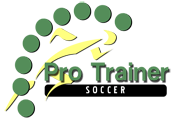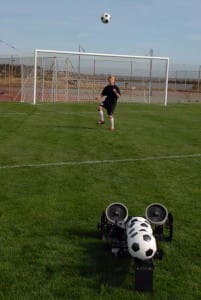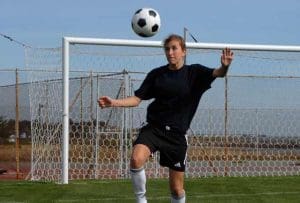speed
strength
stamina
suppleness
skill
spirit (psychological aspect)
One key element is specificity, in that what you want to be fit for, determines which of these S’s has the most weight or importance. For example, a golfer would not need much speed but would need a lot of skill.
Too many coaches train their players to do static stretching while they are cold. This is one of the most dangerous holdovers from the past that is out there. You need to do light calisthenics to warm the muscles up before you stretch them and when you stretch them you should be doing dynamic stretching.
Soccer Fitness Training Tip #2Sprint Training
Too many coaches have their players jog for miles at 50% intensity. That’s just stupid. Do you want your athletes chasing the ball at 50% of what they are capable during a game? Then why would you have them train for a subpar performance. Never sprint until you are properly warmed up. Do not do sprinting the day before a game. Always allow 48 hours of recovery before a game.
Soccer Fitness Training Tip #3Plyometrics
Too often coaches hear a bout plyometrics and through their players into the exercises without a proper understanding of how they need to do the exercises properly. Plyometrics are powerful and dangerous. It’s important that you follow good form.
I’ll explain examples in another article.
Soccer Fitness Training Tip #4
Recovery
I cannot stress enough the importance of recovery. Too often I see coaches destroy players with their “No pain no gain mentality.” When you push your players 100% you need to give them a day off or at least do an active recovery day.
Soccer players need a combination of aerobic and anaerobic fitness due to the nature of the game and the fact that there is continuous movement with lots of short bursts of more intense activity. Some positions require higher levels of anaerobic fitness than others, some require more aerobic fitness. A midfield player, is required to cover a lot of ground during a game and needs a good aerobic engine. A striker on the other hand requires short bursts of repeated activity and requires more speed and anaerobic fitness.
One key aspect of fitness that soccerfitness.net recognizes is that each player is different and has different training requirements dependant upon their inherent physical abilities, their desire to train, age and position played. Soccer is a team sport and as such, players train together as a team. This is important for many reasons, but it also means that not all conditioning type sessions or activities have equal benefits across all players.
Where time is available to test and analyze results, it is much better if programs can be tailored for each player or group of players with the same requirements. I feel this is important from around the age of 13 and up, when the effects of training have much more of an impact. Conditioning and speed training at 10-13 years has less impact. A recent FA coaching report, suggested that players 10-12 benefit from training in that it prepares them physically and mentally for training when they are older. Their motor skills develop and they learn skills like how to run fast, as well as obvious ball skills when carrying out normal soccer skills training.
Once past puberty, speed endurance and strength, speed sessions will have more impact. Before that stage, sessions should not be too intense, involving shorter sessions with little emphasis on stamina. Plyometrics and strength building activities should be carried it with great care pre-puberty.




